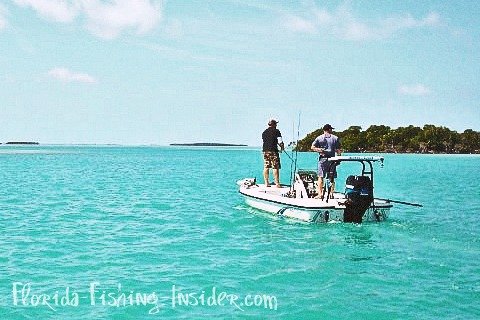Finding New Fishing Areas in Florida
There are many fishing areas in Florida, some you have passed 100 times and never fished, or maybe it's a new area you are visiting for the weekend, there are clues you need to look for to help dial in the spot where the fish are hiding.
The way I find many new areas to fish is by looking at some sort of satellite imagery program such as Google Earth, Mapquest, Terra Server, Flash Earth, Etc... Or, while I'm out fishing an area I see a spot I haven't ever fished and would like to check out.
With the computer programs I look for ledges, troughs, oyster bars, points, cuts and sandbars. These are the places that fish will most likely be around.
After finding the area I want to focus on I get the tide information for that day and head out. Once I arrive at my intended destination I shut my Engine down way short of my intended fishing area, drop the trolling motor and slowly move in.
I like to go at high tide when I'm learning a new area. This way it allows me to move around near the mangroves to look for fish.
When looking for fish, a good pair (Costa Del Mar, Maui Jim, there are some cheaper ones out there also, main thing is that they are polarized) of polarized sunglasses is a must. These help take the glare off the surface so you can see through the water.
Once I get 20'- 30' from the mangroves or shore line, I use my trolling motor on low speed and run parallel with the shoreline and start my search for fish. If at all possible try to keep the sun to your back, as this will allow you to see through the water better and be able to spot more fish.
While trolling the shore line I look for fish laid up fish (fish sitting still), deep cuts and potholes. Also, keep an eye out for mullet jumping, bait breaking the surface and birds diving into the water.
*( Pelicans diving usually mean pods of bait and galls are usually diving after the bits and pieces left over from the predatory fish busting through the bait. These are both very valuable clues in locating fish).
If I spook any fish I just mark that spot and keep moving. I found that 9 times out of 10 they will return to the same spot if you give them a little while ( I try to wait at least 20-30 min). Keep track of all the points and areas with spotty bottom ( areas with a lot of potholes), as these can be key places to target throughout the tide phase.
One of the best ways to learn a new area is to not even take out a fishing pole. Just keep moving and keep looking. Don't forget to mentally mark all the spots you see fish or better yet mark them on your GPS.
Now that I have trolled and scanned the area I usually wait or comeback on low tide if what I found on high tide looked promising.
Low tide, especially winter low tides, reveals a lot of useful clues that you may not be able to notice on high tide. Look for the deeper cuts on the flat, oyster bars, different types of grass, and deeper potholes.
When fishing at low tide, I like to look for mullet jumping, as this helps me to decide how far out from the mangroves to start my search for fish.
Some people prefer to do the scouting process at low tide. Doing this at high tide is my personal preference and it works best for me when looking for snook and redfish.
Once you learn an area, how the tide effects it, you will be able to catch fish in this area consistently and know when and where to look for fish.
Don't expect to learn everything about an area all in one day. It can take weeks or, in some cases, months to learn an area. But once you do, that knowledge will be with you to always fall back on.
Return to Florida Fishing Insider Home page
